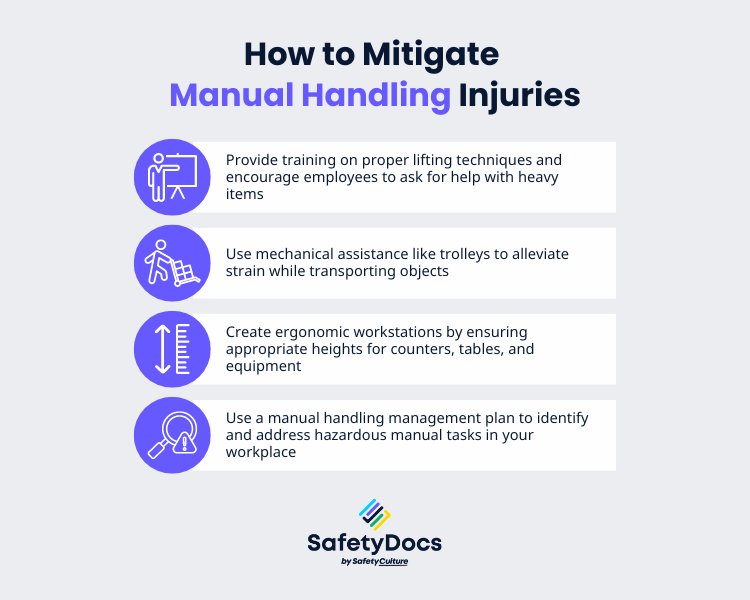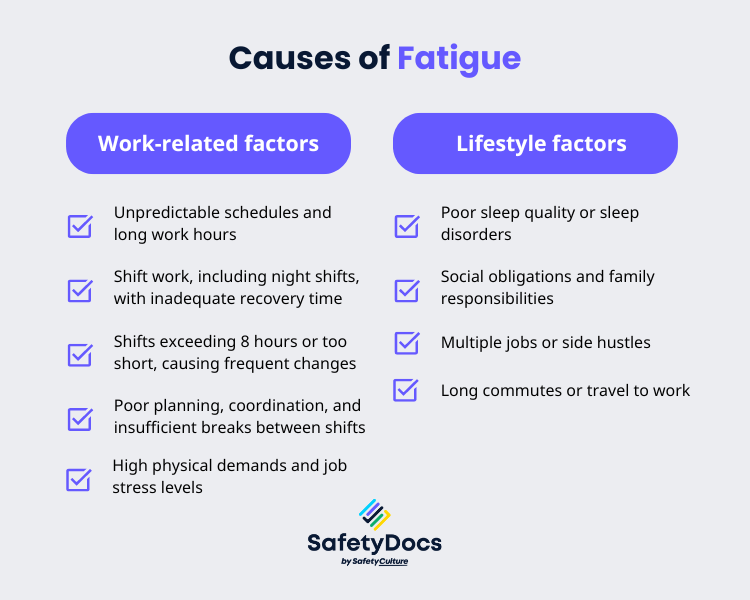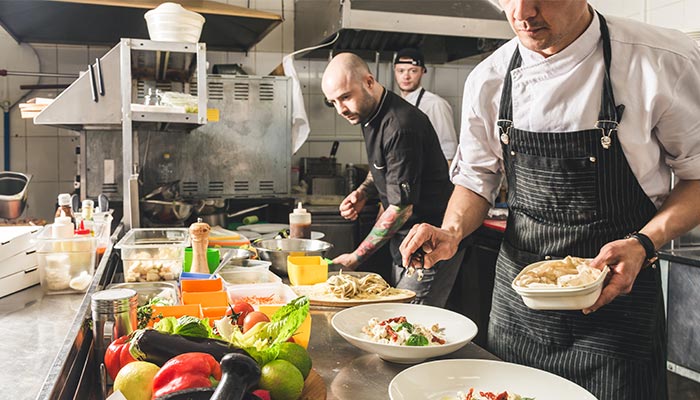The hospitality industry, covering hotels, restaurants, takeaway food services, and bars, is known for its vibrant atmosphere but also faces significant safety challenges. In Australia, the rate of injuries in this sector has been consistently high over the past decade.
Safe Work Australia reports that there were 58.6 injuries and illnesses per 1,000 workers in this industry from 2013 to 2014, which is 38% higher than the national average. This trend has not improved much over the years.
To maintain the health and safety of your staff, it's crucial to be aware of the common hazards they face and know how to prevent them. This blog will walk you through the top ten safety hazards in the hospitality industry and offer solutions to help you maintain a safer workplace.
1. Slips, Trips, and Falls
The first and most common causes of injury in the hospitality industry are slips, trips, and falls. Each year, slips, trips, and falls cause tens of thousands of injuries in Australian workplaces. The causes of these hazards in the hospitality industry include:
- Wet floors from spills and cleaning
- Damaged or uneven flooring
- Clutter or obstacles in walkways
- Poor lighting
- Improper footwear
Controlling the Risk
To mitigate these risks, you can implement the following measures:
- Create safety protocols, policies, and procedures such as regular cleaning, mopping, floor drying, and spill removal and communicate them through training, safety meetings, and policies.
- Assess risks to identify and prevent potential hazards.
- Address hazards during the workplace design phase by ensuring proper flooring, good lighting, and clear pathways.
- Keep the workstations clean and clutter-free and store items in designated areas.
- Provide training to employees on using proper personal protective equipment such as non-slip footwear.
2. Manual Tasks
Lifting, carrying, and pushing heavy objects are common tasks in the hospitality industry. Manual handling injuries, such as sprains and strains, are among the top hazards in the NSW hospitality sector.
Common manual tasks in this industry include:
- Lifting heavy containers of food or drink in the kitchen
- Moving tables and chairs for setting up events or cleaning
- Carrying trays of food or drinks to customers
- Transporting boxes of food, beverages, and other supplies
- Replenishing shelves in storage rooms, commercial kitchens, and bars with heavy items
Controlling the Risk
To prevent these common injuries, consider implementing the following measures:
- Provide training on proper lifting techniques and encourage employees to ask for help with heavy items.
- Utilise mechanical assistance like trolleys to alleviate strain while transporting objects.
- Create ergonomic workstations by ensuring appropriate heights for counters, tables, and equipment.
- Use a manual handling management plan to identify and address hazardous manual tasks in your workplace.

3. Fires, Hot Surfaces, and Boiling Liquid
Burns and scalds are among the most common injuries in the hospitality industry, which are caused by exposure to fire, chemicals, hot oil, steam, or boiling water. Other causes of burns and scalds include:
- Leaving stoves, ovens, and fryers unattended while in use
- Cooking methods that involve hot oil that result in dangerous splashes
- Handling pots of boiling water or other hot liquids without adequate protection
- Exposure to steam from cooking equipment like steam tables
- Use of open flames for cooking, flambéing, or in decorative items
- Ignition of grease buildup on cooking surfaces or in vents
Controlling the Risk
To reduce the risk of burns and scalding, you should:
- Keep floors clean and ensure workers wear slip-resistant shoes
- Use warning signs near hot surfaces, cool cooking oil before draining, and cover equipment with hot fluids
- Employ long-handled baskets, automatic lowering devices for fryers, and gravity-feed chutes
- Train staff on safe usage of espresso machines, deep fryers, and proper techniques
- Conduct routine safety checks to ensure all equipment is turned off before closing
- Equip workers with heat-resistant gloves and apron
4. Chemical Hazards
A worker suffered chemical burns and permanent blindness in one eye from splashing undiluted beer line cleaner into a pressurised keg without protective gear. This case highlights the risks associated with the use of hazardous substances and chemicals within the hospitality industry. The most common harmful substances in the industry are cleaning chemicals like antiseptics, detergents, polishes, and air fresheners, which pose safety and health risks. Here are the key risks:
- Acute health effects: skin irritation, respiratory issues, eye damage, chemical burns
- Chronic conditions: asthma, dermatitis, severe long-term health problems
- Food contamination: when cleaning agents contact food prep surfaces
- Fire explosions: when chemicals are stored too close or improperly
- Legal penalties and reputational damage: due to chemical spills or leaks
Controlling the Risk
To mitigate these health and safety risks, you must:
- Ensure all containers are labelled correctly.
- Follow Safety Data Sheets (SDS) to ensure proper handling, storage, and disposal of all chemical substances.
- Train workers on safe usage of chemicals and provide PPE.
5. Electrical Hazards
Electricity is an essential energy source in the hospitality industry, powering equipment like refrigerators, freezers, ovens, and lighting. However, it also poses a significant risk to employees who may be exposed to electrical hazards. Electrical risk usually comes from:
- Damaged or frayed cords on equipment
- Plugging many devices into one outlet
- Worn-out or damaged electrical appliances and equipment
- Inadequate regular maintenance and inspections of an electrical system
- Wet floors near electrical cords or outlets
Controlling the Risk
A 19-year-old part-time restaurant employee in Australia was electrocuted while cleaning a clamshell grill, resulting in a $120,000 fine for the company, which could have avoided the incident with simple precautions. To prevent the risks of electrocution and electrical fires, you must:
- Allow only licensed and registered electricians to conduct electrical work
- Ensure all electrical equipment meets Australian/New Zealand standards (AS/NZS) and relevant safety regulations, such as AS/NZS 3820:2020 (Essential Safety Requirements for Electrical Equipment)
- Inspect and test electrical equipment regularly
- Use residual current devices (RCDs) to protect against electrical risks
- Implement electrical risk management procedures and train workers

6. Sharp Tools
Cuts and lacerations are among the most commonly reported injuries in the hospitality industry, often caused by knives and other sharp tools. Tools like knives, slicers, and graters are essential for food preparation, but they can also pose significant safety risks if used incorrectly or without proper training. Many factors contribute to the risk of sharp tools, including:
- Dull blades require additional pressure for use
- Improper handling of knives, such as using them to open cans or prying objects apart
- Inadequate training on safe usage and handling of tools
Controlling the Risk
Kitchen staff, bartenders, and servers should follow safe practices to reduce the risk of cuts when using sharp tools:
- Educate workers on the safe use, cleaning, and sharpening of tools and knives
- Wear appropriate protective gear like cut-resistant gloves and aprons, especially when using power tools or sharp instrument
- Store knives safely in designated places like knife blocks or mounted strips, and wash them separately from other utensils
7. Machines and Equipment
An example of a machine-related injury is a kitchen assistant at a club who had her arm crushed by an unguarded mixing machine that lacked an automatic off-switch. Machinery and equipment used in hospitality, such as mixers, slicers, grinders, fryers, and presses, can cause serious injuries if not operated or maintained correctly.
Here are the risks associated with machines and equipment in the hospitality industry:
- Electrical hazards from improper grounding or wiring
- Mechanical risks like crushing, cutting, entanglement, and abrasion
- Slip and trip hazards from machines with sharp edges or inadequate guarding
Controlling the Risk
To prevent injuries from machinery and equipment, workplaces must:
- Use machine guarding and safety devices to prevent accidental contact with moving parts.
- Ensure all machinery and equipment have appropriate safety features such as automatic shut-off, safety interlocks, and emergency stop buttons
- Implement lock-out/tag-out procedures to prevent unexpected start-ups during maintenance or repairs.
- Establish emergency procedures for accidents involving machinery and equipment.
8. Fatigue
All businesses can experience work-related fatigue to varying extents, but certain kinds of work and sectors face a higher risk, especially when they include shift work. Fatigue can have severe consequences in the hospitality industry, where hospitality workers are often required to work long hours, late shifts, and early mornings.
The causes of fatigue in the hospitality industry can be categorised into work-related and lifestyle factors:
Causes of Fatigue
Work-Related Factors:
- Unpredictable schedules and long work hours
- Shift work, including night shifts, with inadequate recovery time
- Shifts exceeding 8 hours or too short, causing frequent changes
- Poor planning, coordination, and insufficient breaks between shifts
- High physical demands and job stress levels
Lifestyle Factors:
- Poor sleep quality or sleep disorders
- Social obligations and family responsibilities
- Multiple jobs or side hustles
- Long commutes or travel to work

Controlling the Risk
The management of fatigue in the workplace involves a shared responsibility between employers and workers. Here are some strategies to mitigate the risk of fatigue:
- Implement the four-step risk management by Safe Work Australia's Guide for Managing the Risk of Fatigue at Work. This includes identifying common hazards, assessing risks, developing risk controls, and reviewing and improving strategies.
- Develop mental health-related policies and procedures to identify and control fatigue-related hazards in consultation with workers.
- Provide adequate rest breaks, flexible work arrangements, and stable/regular shift schedules to allow workers to get sufficient sleep.
9. Workplace Violence
The employees working in the hospitality industry may face violence. A University of Queensland study revealed that more than 60% of hospitality workers experienced sexual harassment, verbal or psychological bullying, or racial abuse, with over 70% witnessing these behaviours. The study also found that 42% reported abuse from managers or supervisors, indicating a widespread problem.
Here are common causes of workplace violence in this industry:
- High public interaction, including intoxicated or aggressive customers, can lead to confrontations.
- Power imbalances and "customer is king" mentality can enable abusive behavior.
- Long hours, high stress, and lack of training for handling difficult situations.
- Blurred boundaries between private and public spaces due to close staff-customer interactions.
Controlling the Risk
To address workplace violence, employers should take practical measures:
- Develop and implement a policy for working with the public that outlines acceptable behaviour and consequences for violations.
- Train staff on how to identify and manage common hazards related to workplace violence.
- Provide a clear reporting process for incidents, including options for confidential reporting.
- Implement comprehensive training programs on de-escalation techniques and self-defence.
- Encourage a culture of respect, non-tolerance for discrimination or harassment, and effective communication between staff and management.

10. Food Safety Hazards
Given the high volume of food consumed in hotels, restaurants, and other food businesses, ensuring food safety is essential. Here are the main food safety hazards in the hospitality industry:
- Contamination of food can occur through bacteria, viruses, parasites, and fungi.
- Foreign objects such as glass, metal, hair, or plastic can end up in food
- Incorrect storage temperatures can allow bacterial growth.
- Contact between raw and cooked foods can spread harmful bacteria.
Controlling the Risk
To reduce food safety concerns in the hospitality industry, businesses need strong food safety programs with these key elements:
- HACCP Plans: Hazard Analysis and Critical Control Points (HACCP) is a systematic approach to identifying, evaluating, and controlling hazards in food production. HACCP plans involve seven principles that businesses can adapt to their operations.
- Proper Staff Training: All staff, including managers, should receive food safety training. Educate staff on food safety principles and HACCP plan specifics.
- Workplace Illness Policies: Implement policies that require food handlers to report illnesses and prohibit them from working while ill.
- Regular Inspections and Audits: Conduct regular inspections of all food handling areas and equipment. Schedule third-party audits for independent verification of your food safety program's effectiveness.
- Temperature Controls: Monitor food temperatures regularly to ensure stored food is safe to consume—train staff on proper temperature control practices, including the use of thermometers.
Protect Your Staff from Hospitality Industry Hazards
Standardise your safety practices with the help of SafetyDocs by SafetyCulture. Empower your hospitality team with our comprehensive suite of tools and resources designed to address the unique safety challenges in your industry. From hazard identification and safety management plans to emergency response, we've got you covered.
Check out our templates to streamline safety processes in your hospitality business:
- Food & Beverage Hospitality OHS-WHS Industry Suite
- Cleaners OHS-WHS Industry Suite
- Food & Beverage Hospitality SOP Pack
With the right workplace health and safety measures in place, you can protect your staff and customers while providing a pleasant and safe experience for all. For more resources on occupational health and safety, contact us today.
Author - Craig Cruickshank is the HSEQ Manager and Senior Technical Advisor at SafetyDocs by SafetyCulture.
Craig comes from a construction and environmental background, with experience in both the private and public sectors and is passionate about making health and safety information easy to find and understand for everyone.
Learn more about Craig's work on LinkedIn
Available for instant download and supplied in fully editable MS Word format for use in your business.
Please note that the above information is provided as a comment only and should not be relied on as professional, legal or financial advice.
Share This Article
